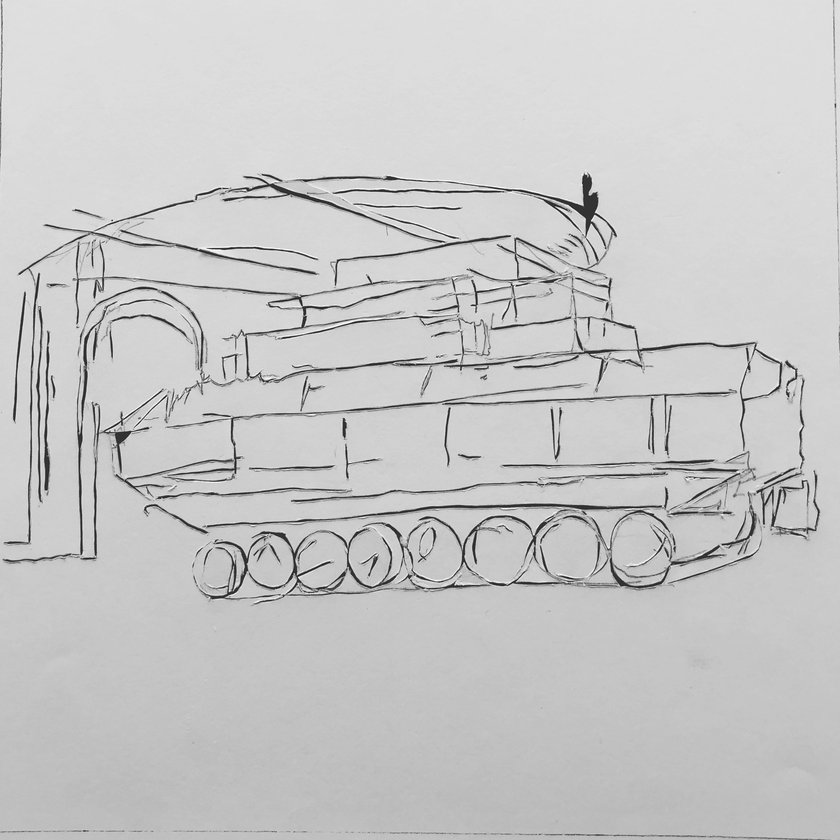Puno MoCA - Berlin - Cesar Cornejo

Cesar Cornejo ( Peru )
Puno Museum of Contemporary Art (Puno MoCA), proposes to redefine the museum by placing the community at its centre, in terms of administration and infrastructure. The project offers neighbours of low-income neighborhoods in Puno Peru, free construction works and repairs in unfinished homes, with the condition that in exchange they allow the museum to exhibit contemporary art by guests artists in the repaired spaces. During the exhibition, visitors enter the houses to see the displays and interact with the owners. When the exhibitions are over the spaces resume their normal functions and new houses are incorporated.
For the Openhaus at ZK/U held in November 2018, Cesar presented an interactive site-specific installation made with paper and strings, to represent a museum space, featuring; videos, photos and texts related to the Puno MoCA project.
Images 3, 4, 5 & 6:
Drawings for Instagram,this series reflects on using digital platforms as a ways to look back at traditional and emotionally charged processes, to portray contemporary culture and reflect on the disconnect between the physical reality and the digital one. This relates to the alternative model of museum Puno MoCA, which I am have working on since 2007 and also while in residency at ZK/U, through bringing back less conventional and more personal ways to experience public space in this case associating it to a digital platform. The works are featured on the designated Instagram account: instadrawings_project.
Image 7:
Puno Museum of Contemporary Art (Puno MoCA), Segunda Entrega (Second Draft) publication project in progress, including essays and images related to the Puno MoCA project.
Images 8 & 9:
Sheetrock Paintings, this body of work is based on photos of plastered and uncoated sheetrock panels taken in construction sites in different locations internationally. They reflect on the contributions that construction workers, many of whom traditionally are immigrants, make to societies around the world. They also address the role of construction worker as artists whose masterpieces, similarly to Leonardo’s “Battle of Anghiari” allegedly hidden behind a wall in Palazzio Vecchio in Florence, lay hidden under coats of paint in apartment buildings, houses, Institutional offices, malls, businesses and churches all over the world.
These works also reinterpret principles from the abstract expressionist movement and those found in the work of Mark Rothko.
Image 10:
Contact, Cesar established a connection between Berlin and Greensboro in North Carolina, town were the Woolworth’s Department Store, where on February 1st of 1960, four black college students sat down at the lunch counter and were refused service due to the segregation laws in place in that part of the United States in those days. The movement grew to 20 students the next day and to 60 the following day. On February 4th, 300 students joined participating in what was to be known as the sit-in movement. This symbolic act became a landmark in the history of the civil rights movement in the United States.
North Carolina remains a conservative state in the United States until this day, and given the current tense political climate, where extreme right movements are reemerging at fast rate, is more than ever important to bring the discussion to those who are on the opposite side of the aisle, and through that dialogue take the necessary steps towards reconciliation and real progress.
In this performance piece, Cesar facilitated a dialogue between people in Berlin and people in in North Carolina, by receiving questions from both sides to ask their counter parts, helping to shade light on issues that they care about. This responds to the conviction that only by debunking preconceptions is that meaningful communication can take place.








